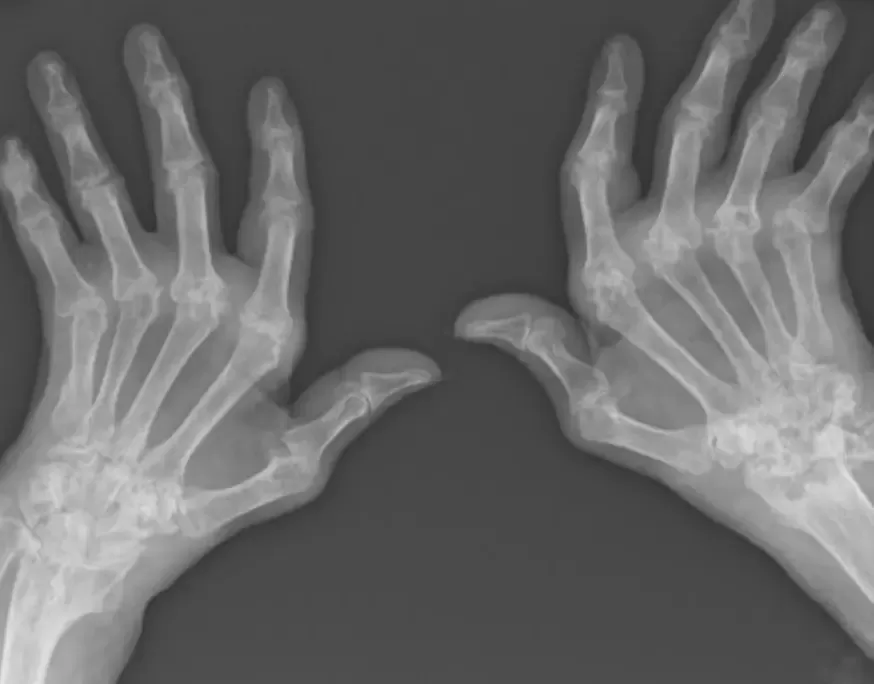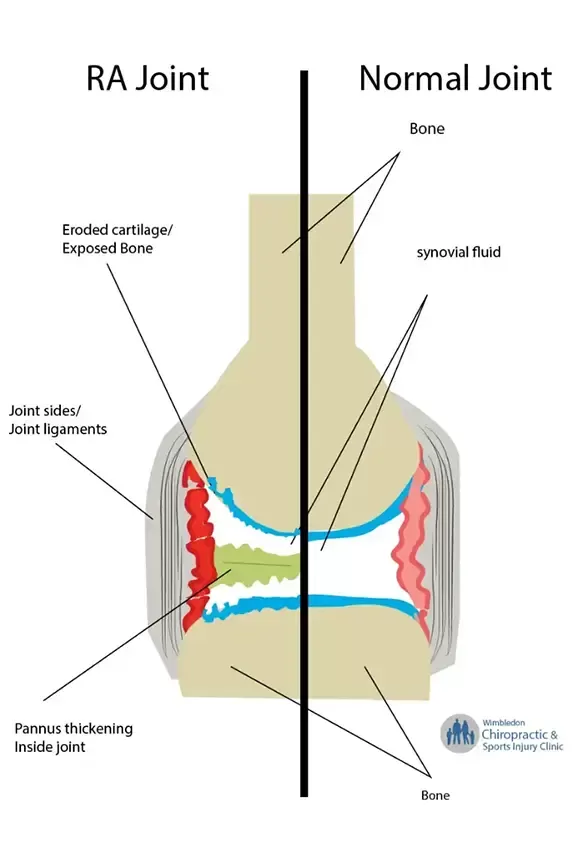Can Chiropractic Help My Rheumatoid Arthritis Hands?

The RA co-management may be with rheumatoid drugs. Still, many decide to use a monitored anti-inflammatory diet and supplements to manage flares, and we see both work well.
Either way, it was great to see this study below, which looked into the details of what we had seen for over 20 years for treating Rheumatic Hands.
Happy reading.
Chiropractic Joint Mobilization of the Hands of Patients With Rheumatoid Arthritis: Insights from a Groundbreaking Study
Rheumatoid Arthritis (RA) is a chronic, autoimmune disease primarily affecting the joints, leading to significant disability and reduced quality of life for those afflicted.
The hands are among the most commonly affected areas, where RA can cause pain, swelling, and a progressive loss of function, profoundly impacting daily activities and overall well-being.
A particularly debilitating aspect of RA is the formation of pannus, a thickened layer of synovium that can aggressively erode joint structures, leading to irreversible damage. Traditional treatments have focused on pharmacological interventions. However, there's growing interest in exploring manual therapies that offer pain relief and functional improvement without the side effects associated with medications.
In 2019, a pivotal study titled "Joint Mobilisation of the Hands of Patients With Rheumatoid Arthritis: Results From an Assessor-Blinded, Randomised Crossover Trial" was conducted by therapists at the Unit for Clinical Therapy Research, Inflammatory Diseases at Stockholm's Rheumatology Unit and published in the Journal for Manipulative and Physiological Therapeutics. This Rheumatology Unit research aimed to assess the clinical feasibility and effectiveness of manual mobilisation techniques on patients suffering from RA in their hands. With the hands particularly susceptible to rheumatoid arthritis's most debilitating effects, this study was a delight; we have split up its methods and objectives through to results.

Application in Myofascial Therapy
Myofascial pain syndrome is a chronic pain disorder caused by tightness and sensitivity in your myofascial tissues. These tissues surround and support the muscles throughout your body. The pain usually originates from specific points within your myofascial tissues called “trigger points.” The Graston Technique is highly effective in treating this condition as it specifically targets and breaks down these trigger points and adhesions.
The Graston Technique at Wimbledon Chiropractic & Sports Injury Clinic
The skilled practitioners at Wimbledon Chiropractic & Sports Injury Clinic have integrated the Graston Technique into their treatment repertoire with remarkable success. Patients presenting with a range of myofascial complaints, from athletes with sports injuries to individuals with chronic muscle stiffness, have experienced significant improvements.
Patient-Centric Approach
At the clinic, each patient receives a comprehensive evaluation to determine the most appropriate treatment plan. The Graston Technique is often combined with other therapeutic approaches, such as chiropractic adjustments, to enhance healing and recovery. The clinic prides itself on its patient-centric approach, ensuring that each individual's treatment plan is tailored to their specific needs.
The Treatment Process
A typical Graston Technique session at the clinic involves the application of these specialized instruments to the affected areas. The process is relatively quick, usually taking about 10 to 15 minutes. While the technique can cause some discomfort, it is generally well-tolerated by patients. The number of treatments required varies depending on the severity and chronicity of the condition.


Objective
The primary goal of this study was to evaluate the practicality and impact of manual hand mobilisation on individuals diagnosed with RA.
The researchers hypothesised that regular, targeted manipulation could slow or halt the progression of pannus formation within the synovial fluid, offering a new avenue for treatment that could complement existing medical therapies.
Methods
The study meticulously recruited a small yet significant cohort of 20 participants, 12 with RA and 8 with osteoarthritis (OA) of the hands, to facilitate clinical comparability. Each participant had one hand randomly selected for treatment, which involved weekly low-grade Kaltenborn manual mobilisation sessions. This technique focuses on the passive sustained stretching of the metacarpophalangeal (MCP) joints II to V, performed by licensed manual therapists. The unique crossover design allowed each hand to serve as treatment and control at different study phases, ensuring a comprehensive assessment of the mobilisation's effects over two months.
Rheumatoid hands treatment with chiro manipulation Results
The findings from this research were both encouraging and significant. For the RA group, improvements were observed not just in the treated hand but also in the contralateral hand across various metrics, including pain reduction (assessed via a visual analogue scale), tender or swollen joint count, and musculoskeletal ultrasound findings (Doppler signal, synovial fluid, and MCP joint space). These improvements were statistically significant, highlighting the potential systemic benefits of localised hand mobilisation. Similarly, the OA group reported substantial reductions in hand pain and improved MCP joint space, suggesting the technique's broader applicability.
Conclusion
The study concluded that manual mobilisation of the hands is a feasible, safe, and effective treatment to integrate into specialised healthcare settings for patients with RA. This conclusion is particularly noteworthy given the absence of any reported adverse events or dropouts throughout the trial, emphasising the approach's safety profile.
Implications and Future Directions
This groundbreaking study provides compelling evidence supporting the integration of manual mobilisation techniques into the treatment regimens for RA, particularly for those suffering from hand-related symptoms. The significant improvements in pain and joint function suggest that such physical therapies offer a non-pharmacological complement to traditional RA treatments, potentially enhancing patient outcomes without the hazard of medication side effects.
Moreover, the systemic benefits observed, as evidenced by improvements in the untreated contralateral hand, raise intriguing questions about the mechanisms underlying manual therapy's effects in RA patients. Future research could explore whether these benefits are mediated through local mechanical effects, systemic immunological responses, or a combination.
In conclusion, the "Joint Mobilisation of the Hands of Patients With Rheumatoid Arthritis" study marks a significant step forward in understanding and treating RA, especially concerning hand involvement. It opens new pathways for non-pharmacological interventions that could significantly enhance the quality of life for those afflicted by this chronic condition, encouraging further exploration and integration of manual therapies into comprehensive RA care strategies.
But for now, the Wimbledon Chiropractic & Sports Injury Clinic remains a centre that can offer this approach to those with rheumatic arthritis at any stage to manage their hand symptoms and enable a less debilitating lifestyle.
You are welcome to call us on 02085403389 and book an in-clinic consultation or £15 call (including case history review) to discuss whether your RA case looks like one we can help.